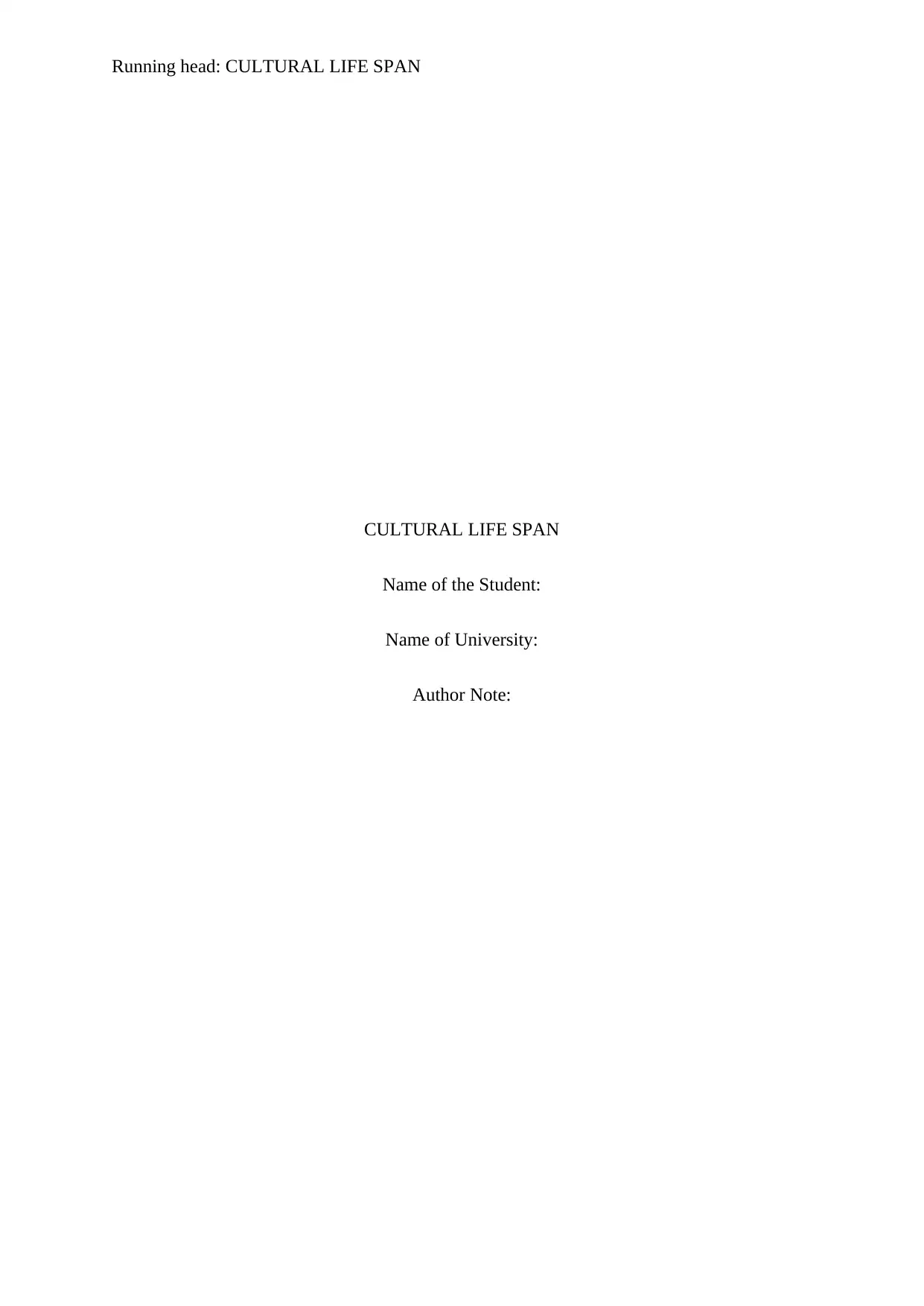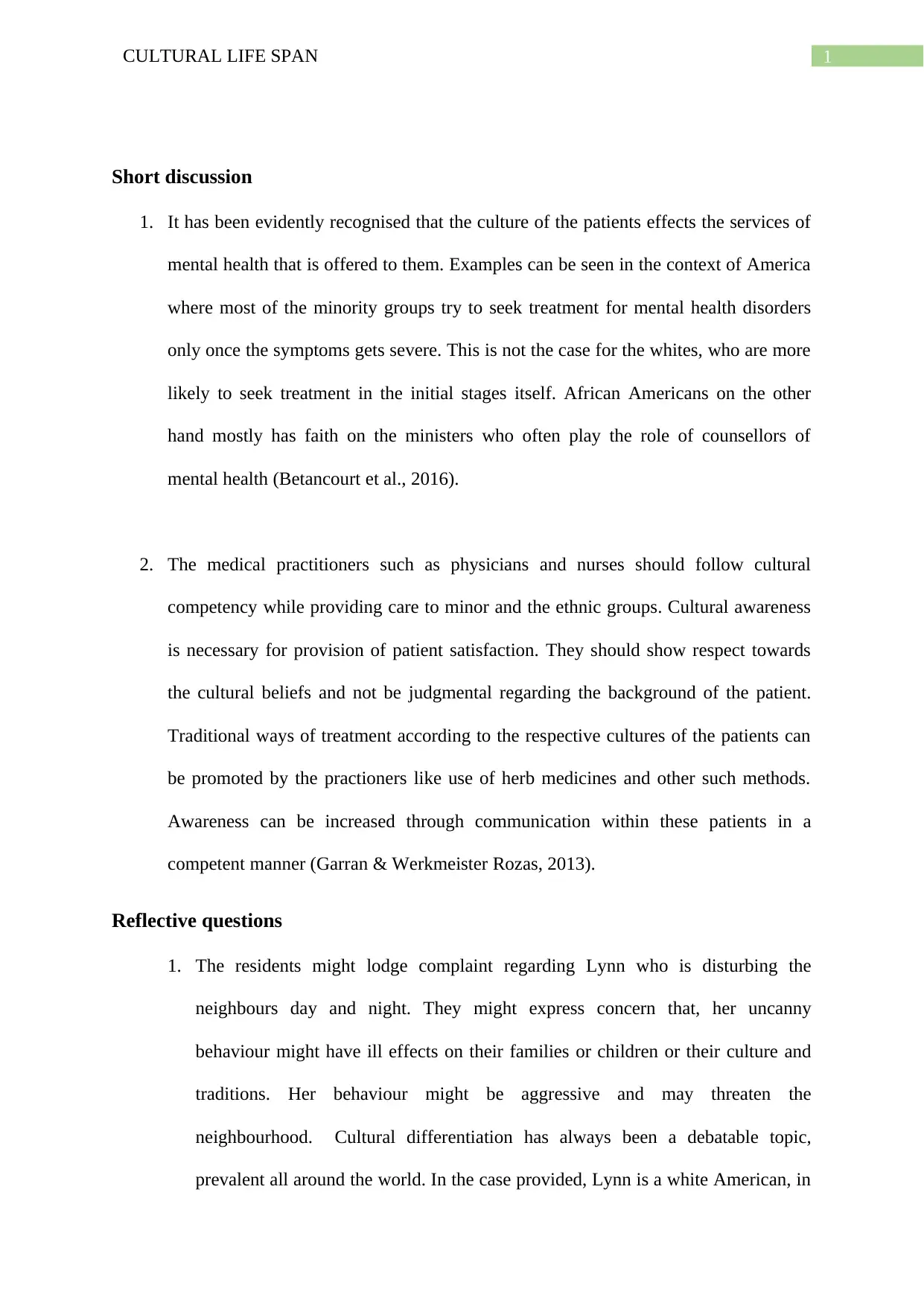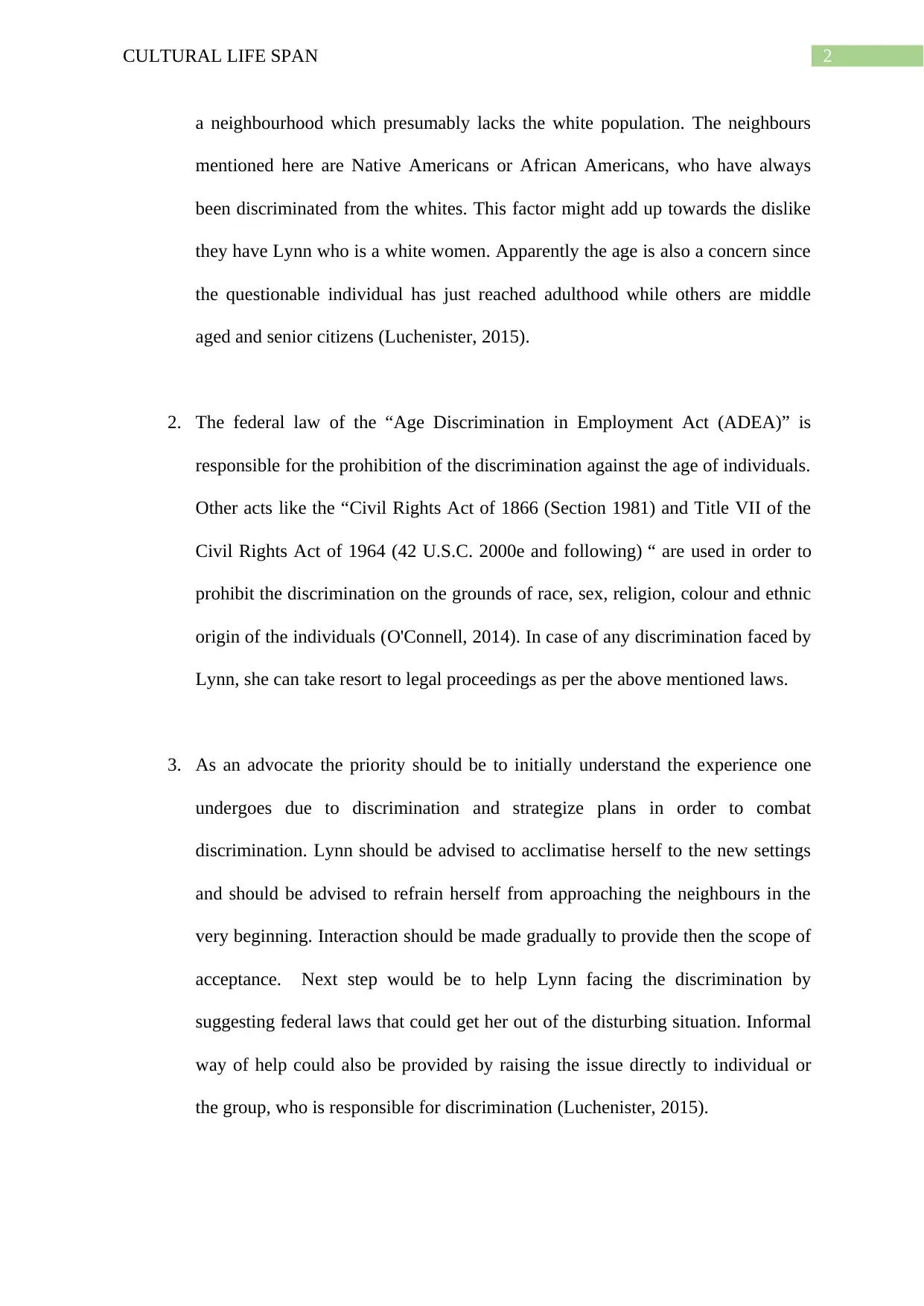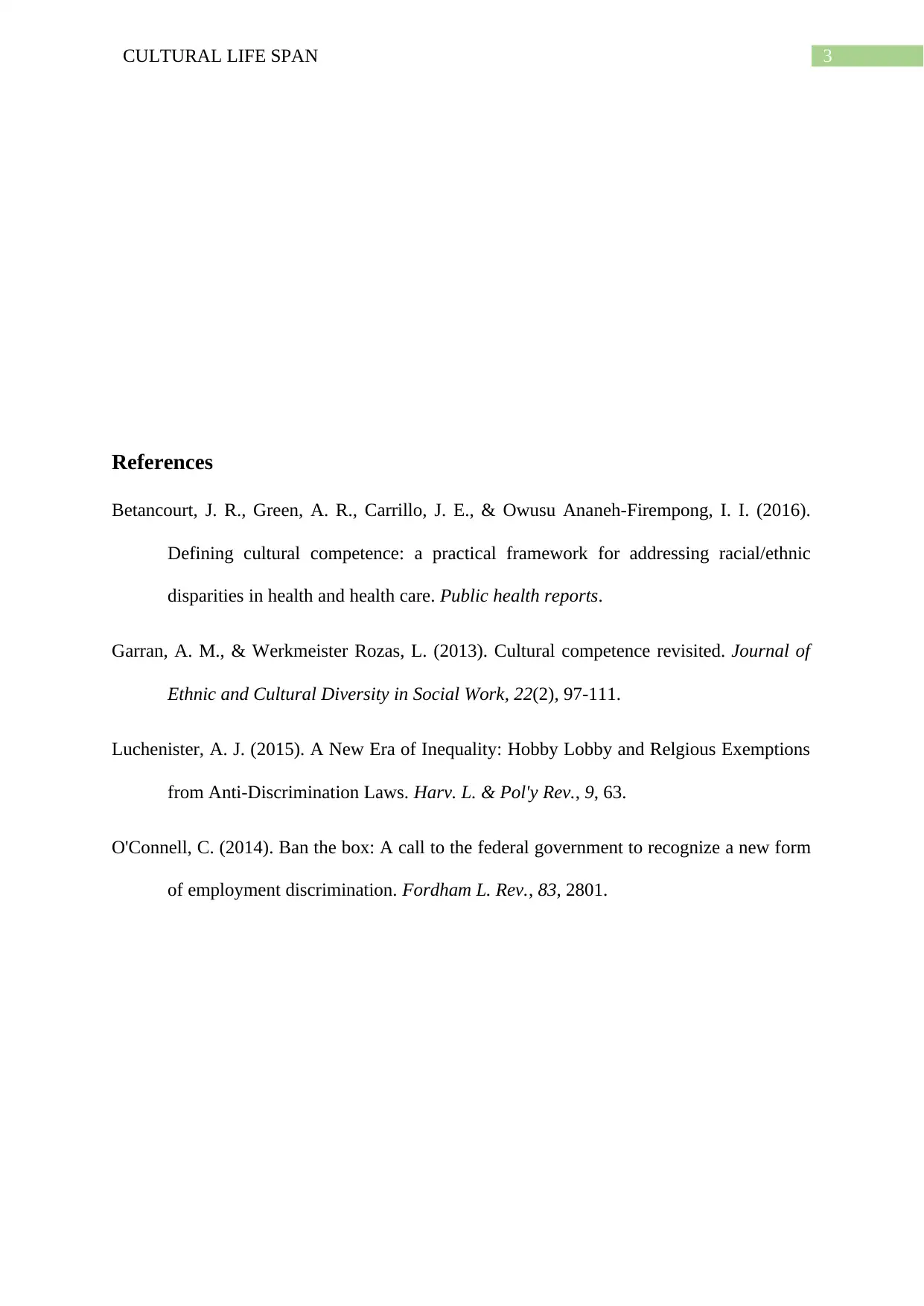Cultural Life Span: Analysis of Mental Health and Discrimination
VerifiedAdded on 2023/06/10
|4
|797
|380
Homework Assignment
AI Summary
This assignment explores the impact of culture on mental and community health care services. It begins with a short discussion on how cultural factors influence the utilization of mental health services, using examples of disparities between different ethnic groups in America. The assignment then addresses the importance of cultural competency for healthcare providers, emphasizing the need for respect, awareness, and non-judgmental attitudes towards patients' cultural beliefs. Reflective questions delve into a scenario involving a young White woman, Lynn, and her interactions with neighbors of different backgrounds. The questions examine potential complaints, relevant federal laws concerning discrimination, and the role of an advocate in addressing the situation. The assignment highlights the significance of understanding experiences of discrimination and strategizing plans to combat it, advocating for gradual interaction and awareness of legal resources to support the affected individual. It also includes references to scholarly articles supporting the analysis of cultural competence and discrimination.
1 out of 4











![[object Object]](/_next/static/media/star-bottom.7253800d.svg)